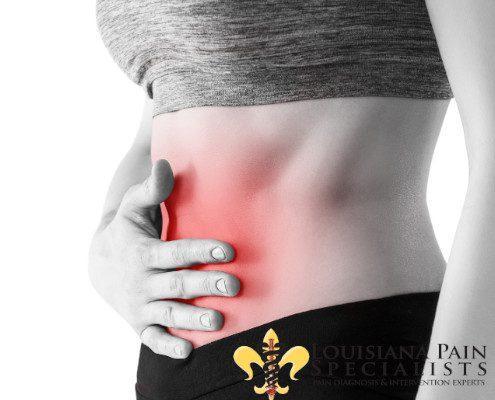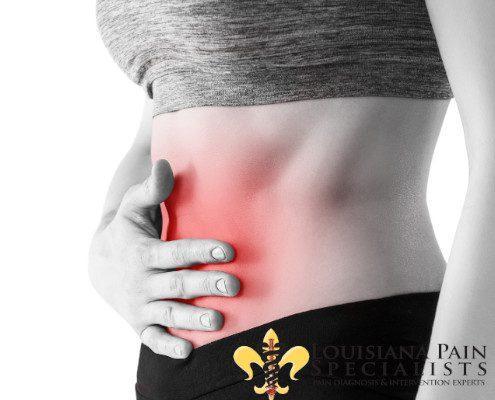
What is Chronic Abdominal Pain?

Chronic Abdominal pain is a stomach ache that is present for more than three months that can occur all the time or can come and go and is severe enough to hinder everyday activities. In most cases, abdominal pain is not serious and can get better without treatment. It can impact children beginning after the age of 5 all the way to adults, but women are affected more often than men.
Causes
The specific cause for Chronic Abdominal Pain is often difficult to determine. The symptoms can range from mild to severe and can come and go over time. Conditions that may cause chronic pain include: Angina, Celiac Disease, Chronic Pancreatitis, Endometriosis, Functional Dyspepsi, Gallstones, Gastritis, Gastroesphageal Reflux Disease, Hiatal Hernia, Inguinal Hernia, Irritable Bowel Syndrome, Mittelschmerz, Ovarian Cysts, Pelvic Inflammatory Disease, Peptic Ulcer, Sickle Cell Anemia, Pulled Muscle, and Ulcerative Colitis.
Treatments
Doctors will evaluate the pain and determine if it is a functional pain (a pain that exists for more than six months and occurs without a specific physical disorder or gastrointestinal problem) or if it is caused by a disorder, drug or toxin. The Chronic Abdominal Pain can be due to a variety of conditions including constipation, indigestion, bowel inflammation, and even different types of cancers. The treatment will depend on the cause and the symptoms which can be as simple as changing your diet up to pain medication and sympathetic blocks.
Treatment of persistent pain from chronic pancreatitis historically was difficult to treat. For years, our focus was on opioid and other analgesics and psychological treatments. Recent studies provided evidence for decrease in analgesic intake and pain scores after properly conducted sympathetic blocks (celiac, splanchnic nerve blocks). These therapies should be considered as parts of a multimodal analgesic strategy. ~ Dr. Suneil (Neil) Jolly, Louisiana Pain Specialists
Some Chronic Pain Treatments Include:
Spinal Cord Stimulation– Spinal Cord Stimulation (SCS) works by blocking pain signals in the spine before they reach the brain. The spinal cord simulator system includes a generator (similar to a pacemaker), which is initially kept outside of the body during a trial period. It can be permanently implanted into the body if the patient gets relief during the trial period. The generator is connected to leads, thin wires that are placed in the outer layer of the spinal cord and deliver pulses from the generator. An external devise, the controller, allows the patient to regulate how the stimulation feels. Learn more HERE.
Celiac Plexus Block – This procedure is performed to diagnose and reduce abdominal pain caused by conditions such as cancer or pancreatitis. An injection is used to block the nerves serving the abdomen. An intravenous (IV) line may be used to administer medication to relax the patient. Learn more HERE.
Splanchnic Block – A splanchnic nerve block is a minimally invasive treatment for individuals suffering from chronic abdominal pain that does not require surgery. It is an injection of medication that helps relieve upper abdominal pain, which is associated with patients who have pancreatic cancer, pancreatitis, and other conditions that affect the gallbladder, liver, kidneys, stomach, and small intestines. Learn more HERE.
Suffering from chronic pain affects a person’s quality of life. The physicians at Louisiana Pain Specialists have a passion for educating our patients and are dedicated to practicing pain medicine in a responsible manner that brings relief to those who are suffering. Find out more at https://louisianapain.com/.
